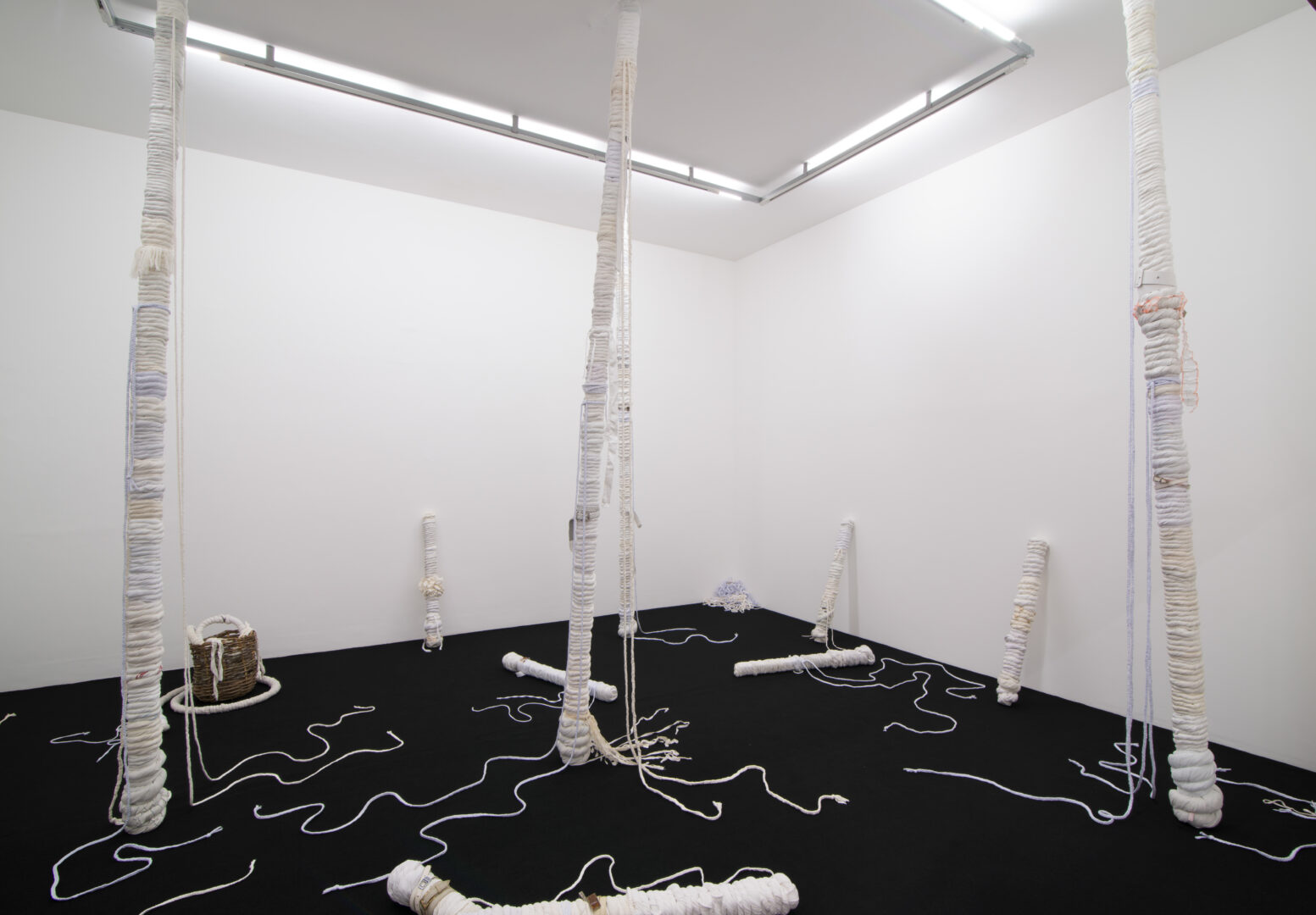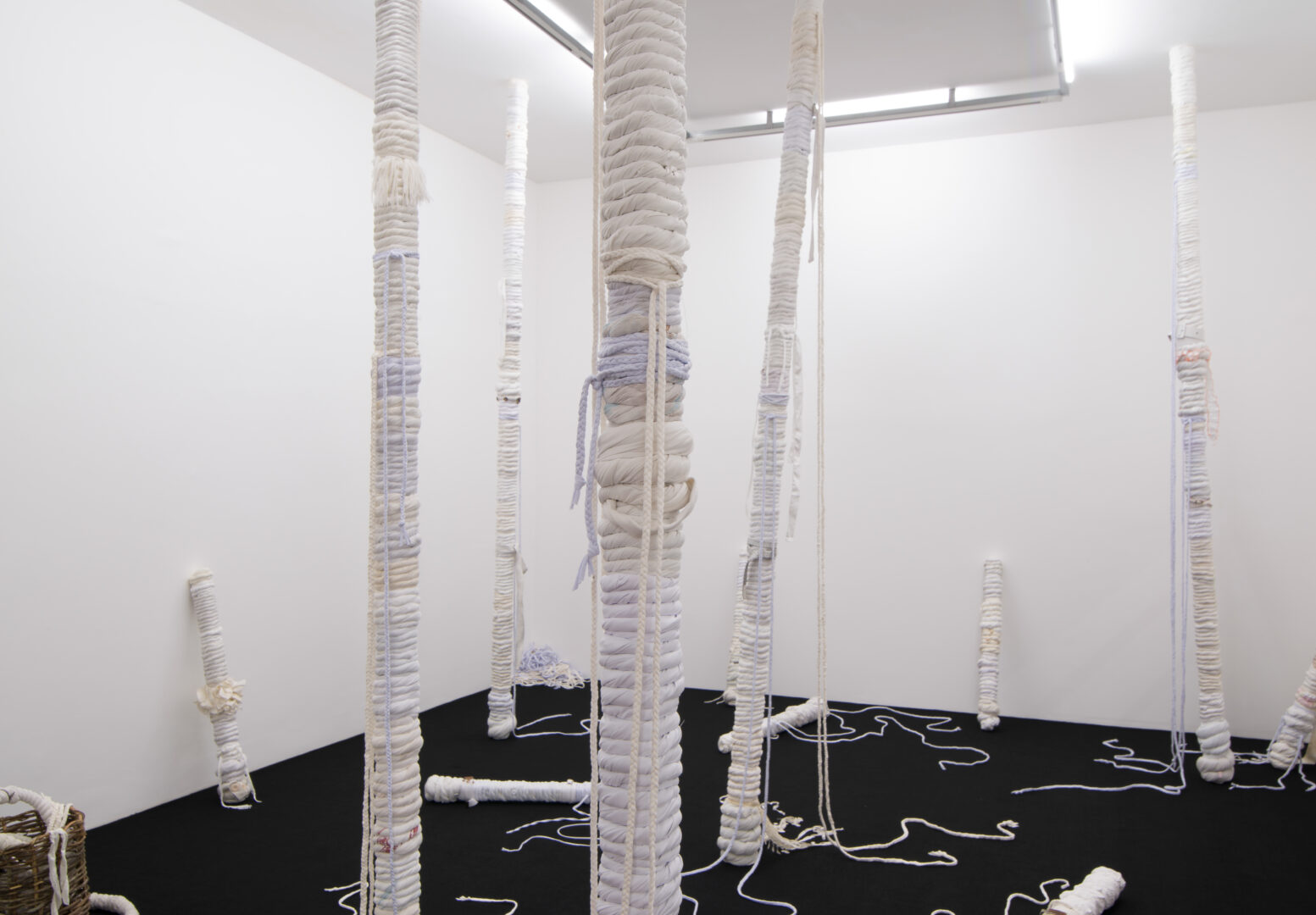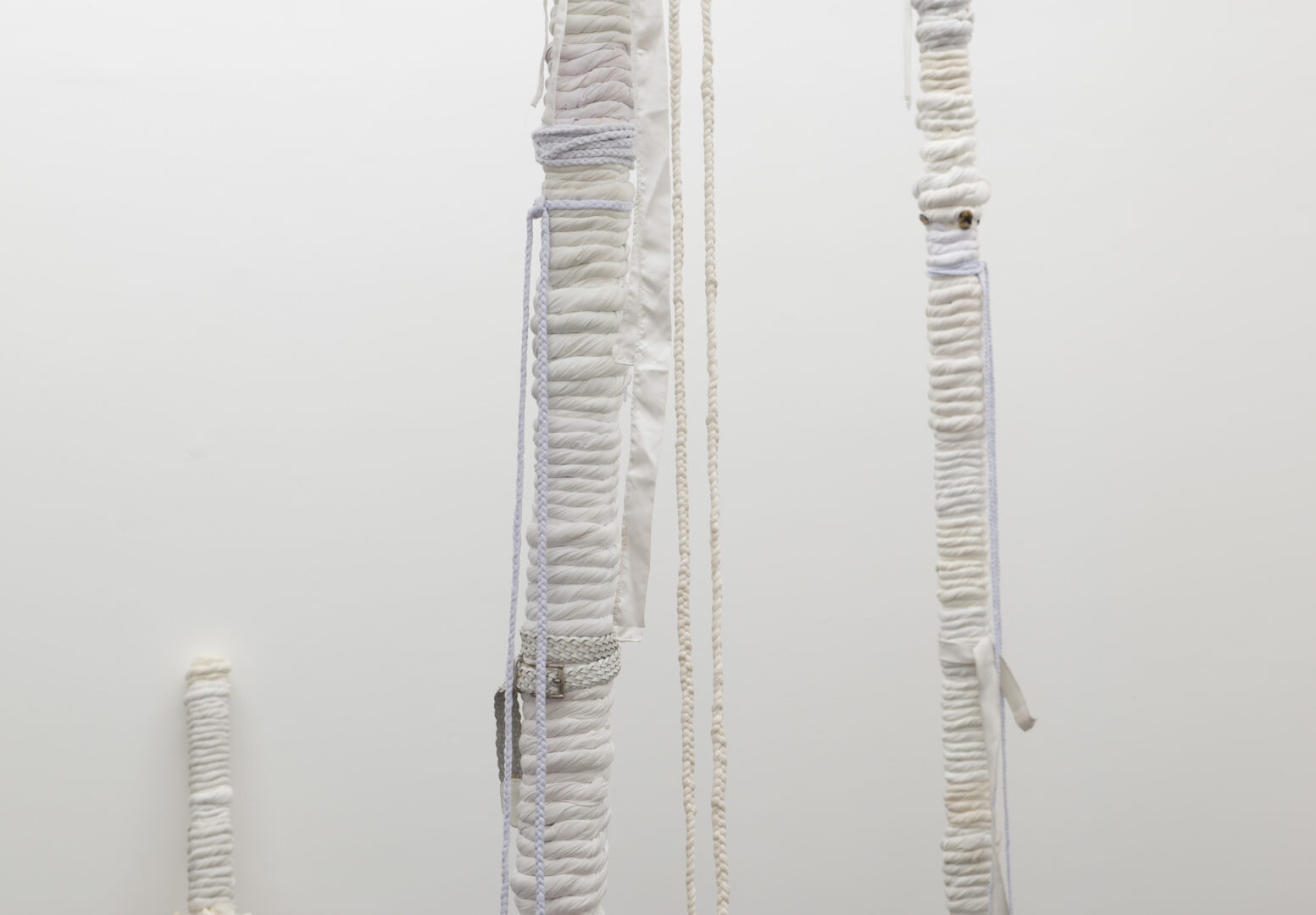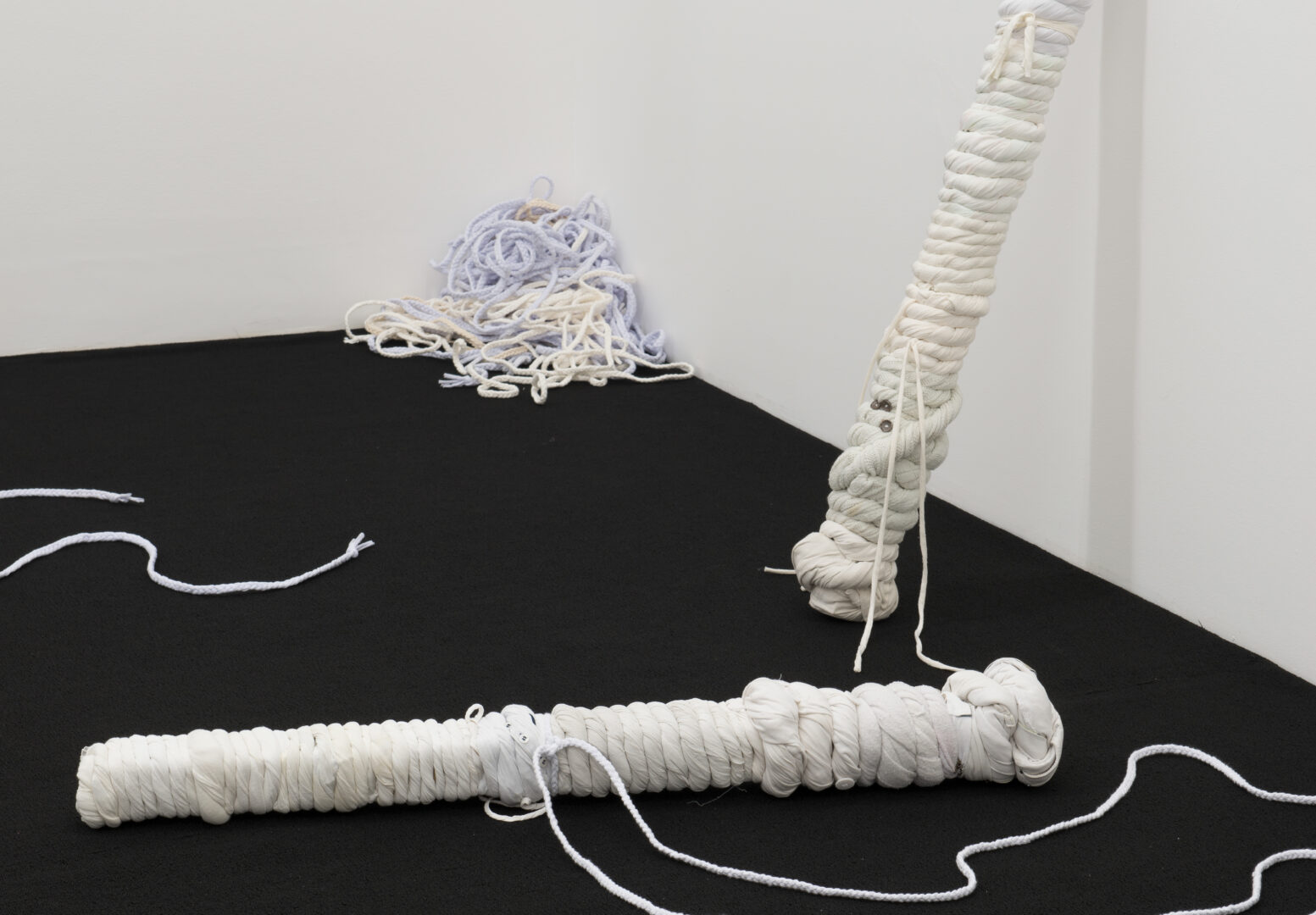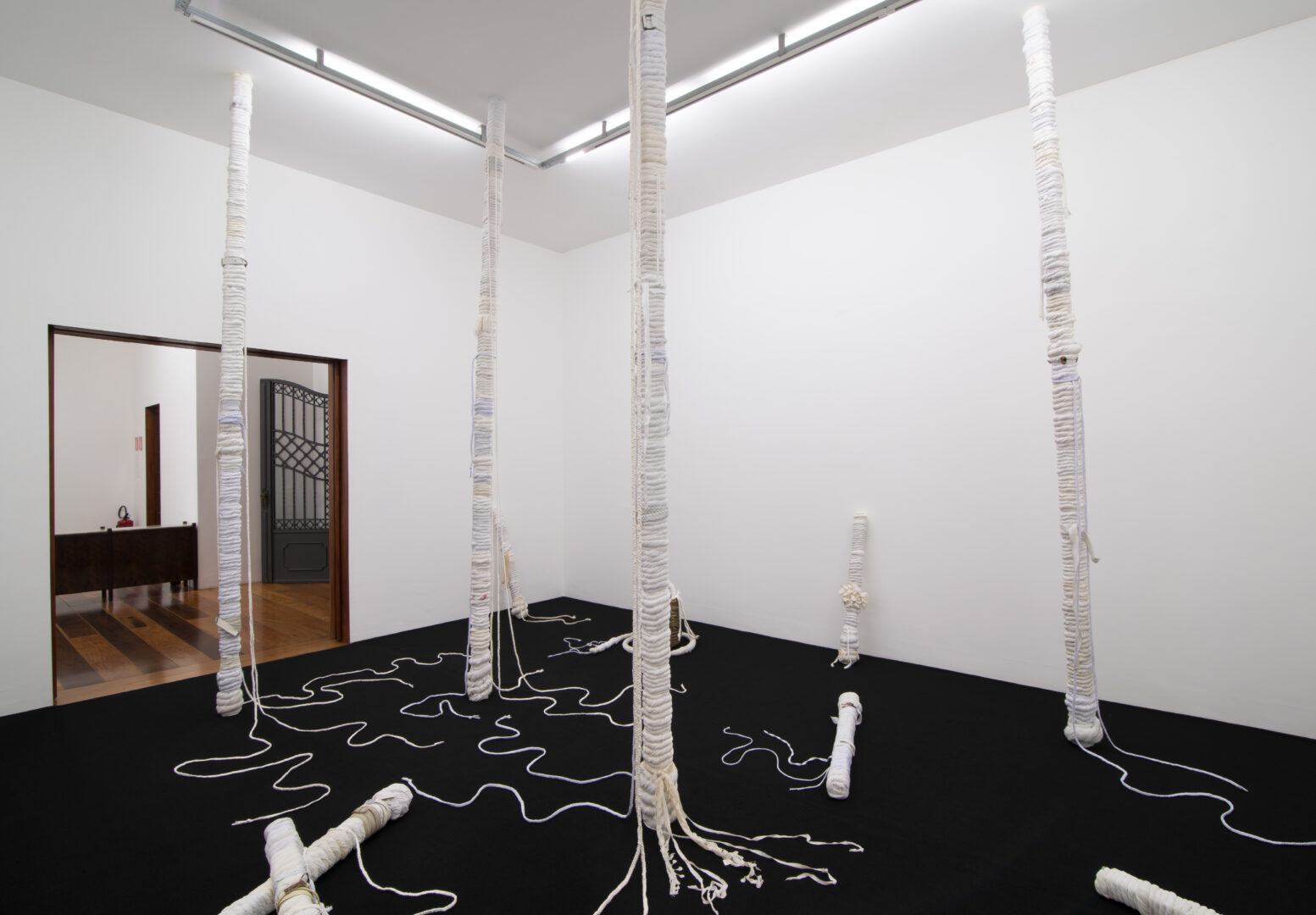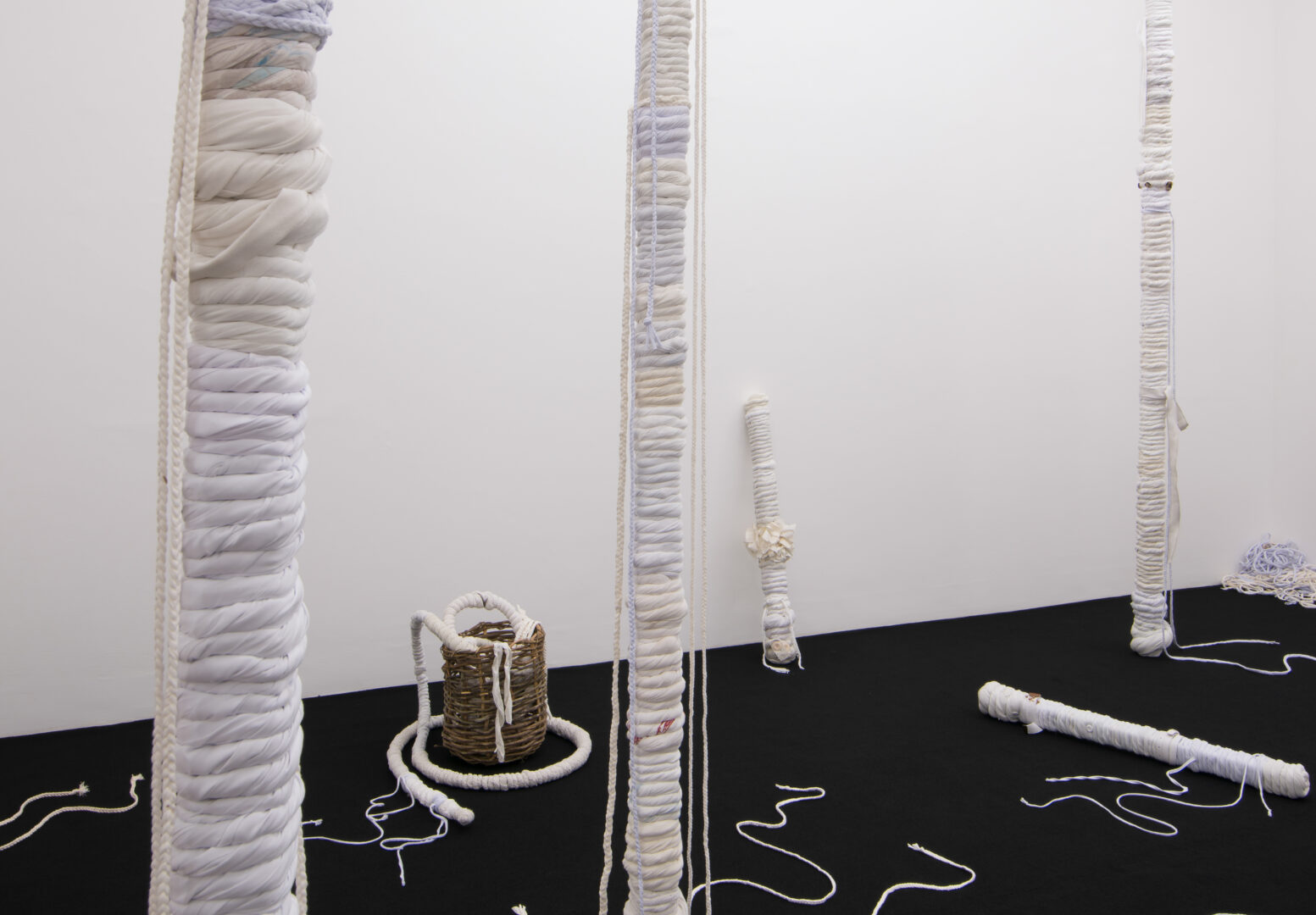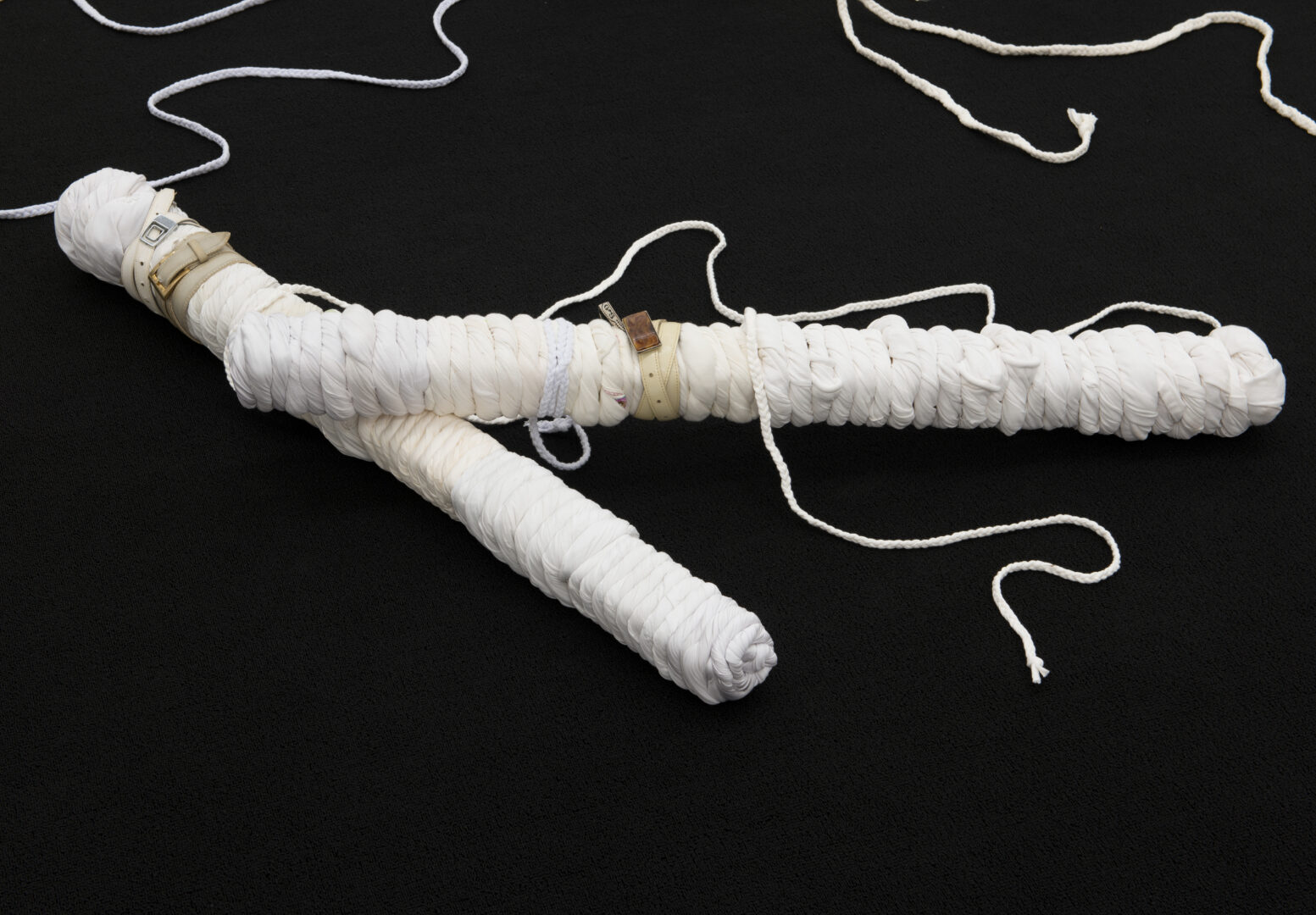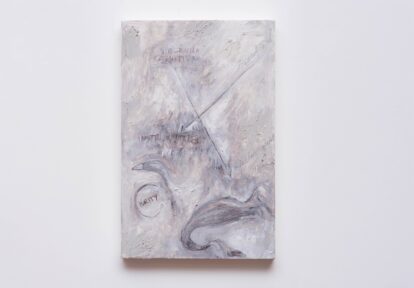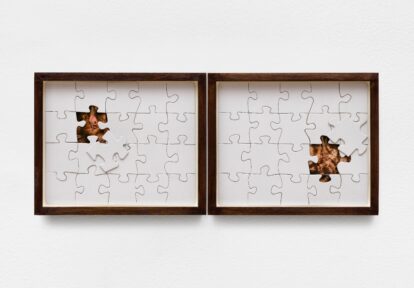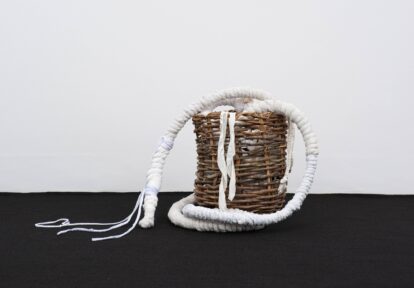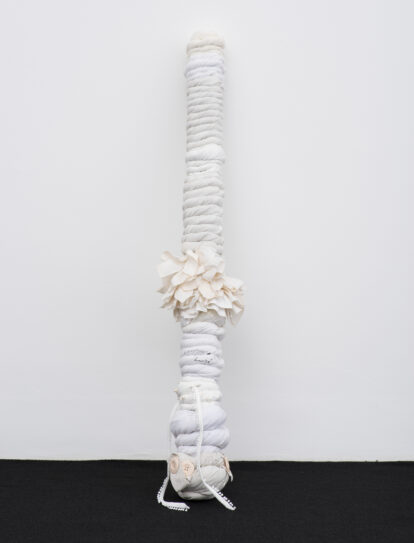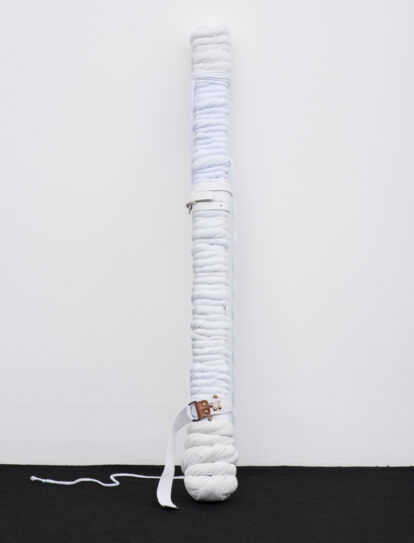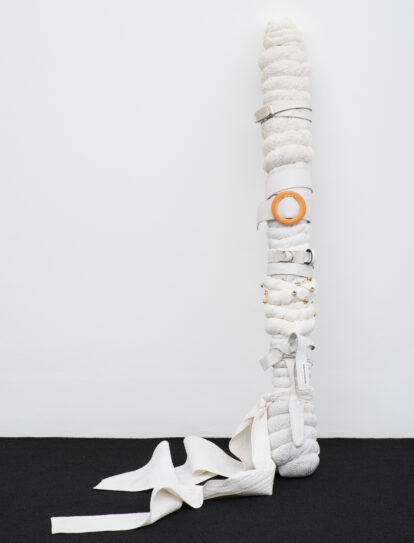The whites occupy a large house at Rua Jamaica, 50. They are imposing in stature and firm in the verticality that keeps them standing, from ceiling to floor, proud and, why not say it, slender. They make a point of not being seen alone; this is why they appear in groups of at least five, but we can also find them in groups of ten, especially the shorter ones, who stand below three meters in height and are distributed throughout the space. Together, the whites appear with the material components that characterize and strengthen them: their clothes and their mannerisms.
At first sight*, perpendicular columns cut the horizontality of the space, interrupting the passage that connects one room to the other and appeared tall, wide and continuous; we then realize that those columns, randomly surrounded by smaller ones, are made up, like a showcase, of twisted and tied-up pieces: cotton shirts, knits, natural fibers, lace, synthetic coats, belts, pants, tops, hand-made embroideries. Every component of the work would be familiar to most viewers, yet also not, because each component originated from a different faraway place. Handcrafted garments participate in the construction of the columns and are involved in contortions together with ready-to-wear commodities that travel the world at low costs, all of them decorated with simple embellishments, often metallic details – buttons, buckles –, that shine in the brightness of the space.
The cohesion of the whites is also evidence that they work in unison, like a choir. Although endeavoring to sing together, at the same pitch and in order to create a unity that identifies them universally, it is this very effort at cohesion that allows viewers to recognize them as a particular group, with their different tones – as two tones of the same pitch can form a unison, even with different origins. The contrasts in fabrics’ surfaces, such as the texture of natural fiber next to a notably artificial piece, or the sinuosity created by the folds of the clothes when submitted to the force exerted by hands, or even the color that comes to the surface of each textile weave, exposing the nuances of the whole: the white, the whitest, the grimy. Flashes.
Twists and flashes; these are the main components used by Ana Raylander in her proposal for Clarão. The active use of a slow process as artistic procedure in the weaving of each material-piece allows the artist to demonstrate her commitment to reflecting on the possible reconstructions offered by this process in the establishment of variations of the same matrix. This game allows viewers to come into contact with important aspects of the poetics developed by Ana Raylander in recent years, and updated for this occasion.

